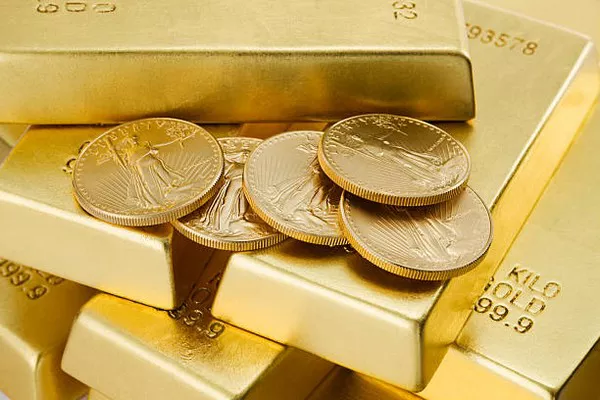Gold prices witnessed a notable rise on Thursday, resilient in the face of the Federal Reserve’s indication to maintain higher interest rates for an extended period. The yellow metal found support from safe-haven buying amid escalating conflict in the Middle East.
Despite the Federal Reserve’s commitment to prolonged higher interest rates, gold experienced a surge, fueled by safe-haven demand as the conflict involving U.S.-led forces and the Yemen-based Houthi Group intensified. The Fed‘s comments triggered a sharp reversal in risk-driven markets, particularly impacting stocks, and subsequently increased the appeal of gold as a safe-haven asset.
Spot gold demonstrated resilience, registering a 0.3% increase to $2,045.21 per ounce, while gold futures expiring in March showed a marginal dip of 0.2% to $2,062.40 per ounce by 00:22 ET (04:22 GMT). The disparity between spot and futures prices highlighted heightened near-term demand for physical gold.
The upward trajectory in gold prices faced resistance from a robust rebound in the U.S. dollar, which traded near seven-week highs.
Federal Reserve Chair Jerome Powell Downplays March Rate Cuts
Fed Chair Jerome Powell adopted a hawkish stance, stating that it was premature for the central bank to consider trimming interest rates in March, citing persistent inflation. Despite this, Powell left the door open for potential rate reductions later in the year, emphasizing the ongoing resilience of the U.S. economy and anticipating a decline in inflation in the coming months.
Powell’s comments sparked speculation among market participants, with increased bets on the Fed initiating rate cuts by May. The CME Fedwatch tool indicated a 63% probability of a 25 basis point cut in the Fed’s May meeting. Traders also adjusted expectations for the U.S. benchmark rate to end 2024 in a range of 3.75% to 4.0%, down from its current range of 5.25% to 5.5%. Goldman Sachs analysts echoed this sentiment, forecasting a May rate cut and maintaining the outlook for a total of five rate cuts in 2024.
The potential for lower lending rates augurs well for gold, as higher rates typically elevate the opportunity cost of purchasing bullion. The market now awaits further developments and economic indicators as gold prices navigate the complexities of geopolitical tensions, monetary policy shifts, and the broader economic landscape.


